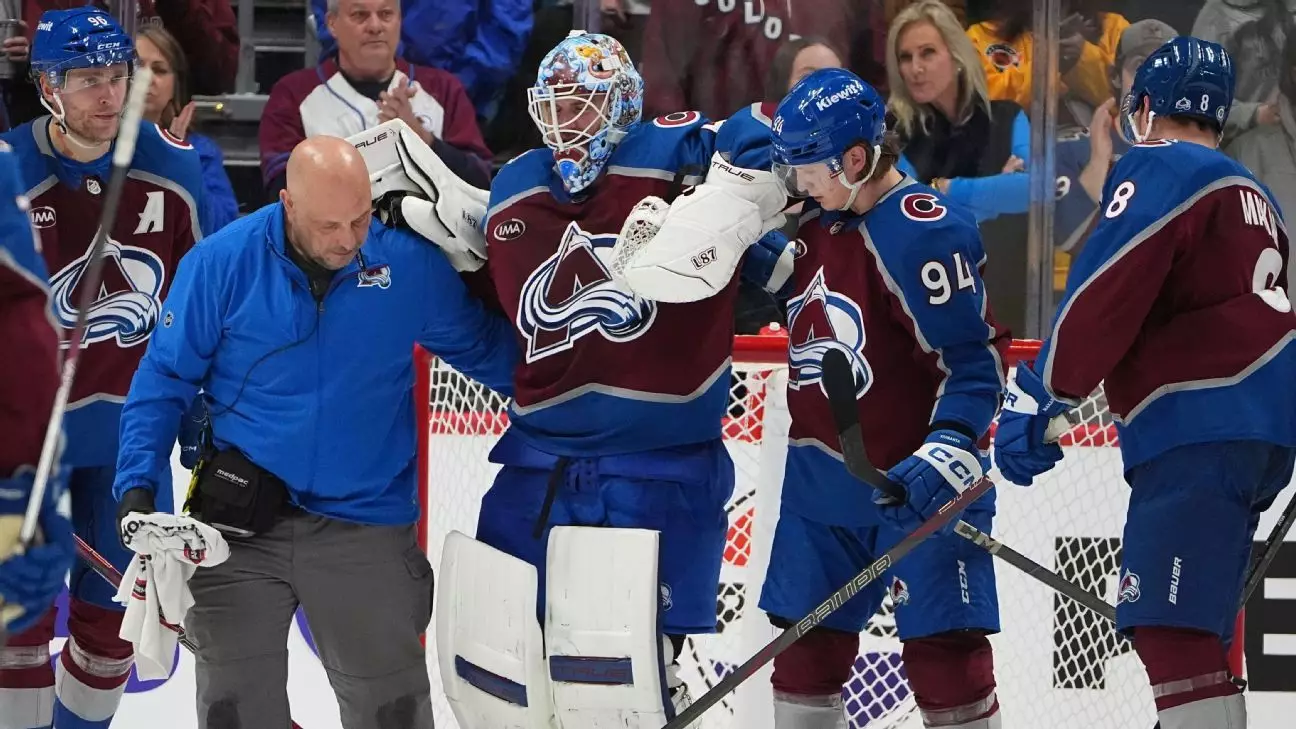In the high-stakes world of professional hockey, intense emotions often flare, particularly when the lines between fair play and player safety become blurred. Such was the case during a recent matchup between the Colorado Avalanche and the Buffalo Sabres, where an officiating decision regarding a goaltender injury stirred up significant controversy. Avalanche head coach Jared Bednar’s reaction following a dramatic overtime win highlights the complexities and challenges faced by coaches and players, especially when safety regulations seem inadequately enforced.
During the third period of the game, an incident occurred that tested the limits of Bednar’s composure. Goaltender Scott Wedgewood found himself on the ice, injured after being hit by a Buffalo player who had been pushed into him. The crucial moment came when the officials opted not to stop play, even as a visibly hurt Wedgewood remained down. Instead, the Sabres capitalized on the situation, scoring a goal during what Bednar characterized as a clear breach of player safety.
This event illustrates not just a disagreement in officiating calls but also prompts critical questions regarding the integrity of player safety protocols. The NHL has struggled for years to strike a balance between the competitive nature of the sport and the necessity of protecting its players. In Bednar’s view, and many sports analysts agree, the officials’ failure to halt the game in light of Wedgewood’s injury was a glaring oversight that could have dire consequences.
Bednar’s ire stems not only from the immediate implications for his team’s performance but also from a broader concern about the league’s commitment to maintaining player safety. He articulated a sentiment encapsulated by many in the hockey community: the responsibility falls on the referees to prioritize player health above all else. Bednar’s insistence that “the whistle should go” reflects a deep-rooted ethos in hockey that plays should be stopped when a player’s well-being is at risk.
Moreover, his efforts to challenge the goal for goaltender interference serve to underscore his determination to advocate for his player, even if he knew the likelihood of success was slim. This thought process exemplifies a common grievance among coaches: the perception that officiating is inconsistent and that safety protocols are not uniformly applied. For him, the stakes are personal, and the responsibility to fight for fair play within the confines of the game is imperative.
On the ice, Bednar’s scorn translated into motivation for the Avalanche. Teammates rallied, turning a three-goal deficit into a thrilling overtime victory. Jonathan Drouin’s late equalizer and Devon Toews’ overtime winner highlighted the resilience and fighting spirit typically associated with the Avalanche. The emotional rollercoaster serves as a reminder that, while players can channel anger into performance, the underlying issues require continual scrutiny.
In the aftermath, Bednar contemplated reaching out to NHL officials, signaling ongoing dialogue about the need to reassess how injuries are handled in the game. Such communication could be pivotal not only in addressing the specific incident but also in fostering a culture where the health of players is prioritized during fast-paced action. The challenge lies in emphasizing that the swift pace of the game should not come at the expense of ensuring that players are protected from undue harm.
As the NHL grapples with these pressing issues, it’s evident that the incident between the Avalanche and Sabres is emblematic of larger themes in professional sports—particularly the balancing act of maintaining competitive integrity while ensuring player safety. Jared Bednar’s strong reaction serves to highlight a discomfort lurking beneath the surface of intense competition: the need for a culture shift in how officiating and player safety are perceived.
Ultimately, while victories may provide fleeting euphoria, the greater goal must always focus on preserving the long-term health and safety of athletes. Without a proactive approach from the league, incidents like this will continue to ignite passionate debates and leave crucial aspects of player safety unresolved.


Leave a Reply